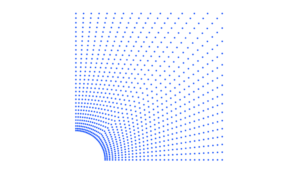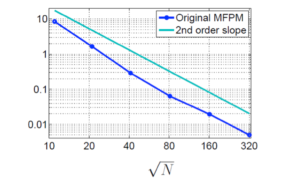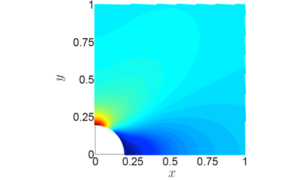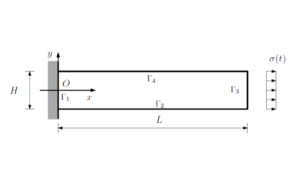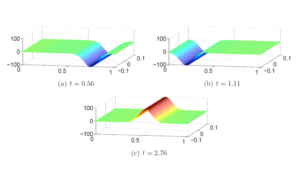Introduction
Particle Methods are a class of numerical methods which basic idea is to represent a continuum trough a set of particle with a proper mass, velocity and energy, that carry with themselves the information of the continuum. Such particles are not “rigidly” connected between themselves, in the sense that there is not an underlying mesh or grid. This characteristic permits Particle Methods to avoid numerical problem typical of the Finite Element Methods (i.e., element distortion, spurious numerical errors, etc.), and also make Particle Methods ideal for the description of fast dynamics problems, e.g. explosions and impacts, and also for fluid-dynamics and gas dynamics.
The first example of Particle Method is the Smoothed Particle Hydrodynamics (SPH) introduced by Lucy [1] and Gingold and Monhaghan [2] for the study of astrophysical problem. Many other methods have been introduced to improve the original formulation and correct some deficiencies. Among these we mention the Reproducing Kernel Particle Method (RKPM), the Modified Smoothed Particle Hydrodynamics (MSPH), the Corrective Smoothed Particle Method (CSPM).
One of our research topic is the Modified Finite Particle Method (MFPM) [3-5], a recent methodology of approximation of differential operators, derived from the CSPM.
Goal
Given a continuum domain in Ω (Fig. 1), the first step is to discretize it in a certain number of particles (Fig. 2). Then it is necessary a procedure to compute the derivatives on each particle. The general idea developed to achieve the discrete differential operators is to consider the Taylor series expansion of a function u(x) up to the desired order, then to project it on a set of known projection functions. Then we are able to write an algebraic system in the form:
Aidi=fi
where A i is a coefficient matrix, d i is the vector containing the derivative values in xi, and f i is a term containing the value of the unknown function in xi . Then we have the expressions of the derivative values depending on the values of the unknown function u, and we can use them for a collocation method. The method has been applied to linear elasto-statics and elasto-dynamics, with results that confirm, in many cases, the expectation of second-order accuracy (Fig. 3).
References
- L. B. Lucy, “A numerical approach to the testing of the fission hypothesis”, The Astronomical Journal, 82(1977), no. 12, 1013-1024
- R. A. Gingold and J. J. Monaghan, “Smoothed particle hydrodynamics: theory and application to non-spherical stars”, Mon. Not. Royal. Astr. Soc. 181 (1977), 375-389
- D. Asprone, F. Auricchio, G. Manfredi, A. Prota, A. Reali and G. Sangalli, “Particle methods for a 1d elastic model problem: Error analysis and development of a second-order accurate formulation”, Comp. Mod. Eng.g & Sci. 62, 1-21 (2010)
- D. Asprone, F. Auricchio and A. Reali, “Novel finite particle formulations based on projection methodologies”, Int. J. Num. Meth. Fl. 65, 1376-1388 (2011)
- D. Asprone, F. Auricchio and A. Reali, “Modified Finite Particle Method: application to elasticity and plasticity problems”, in press on Int. J. Comp. Meth. (2013)



